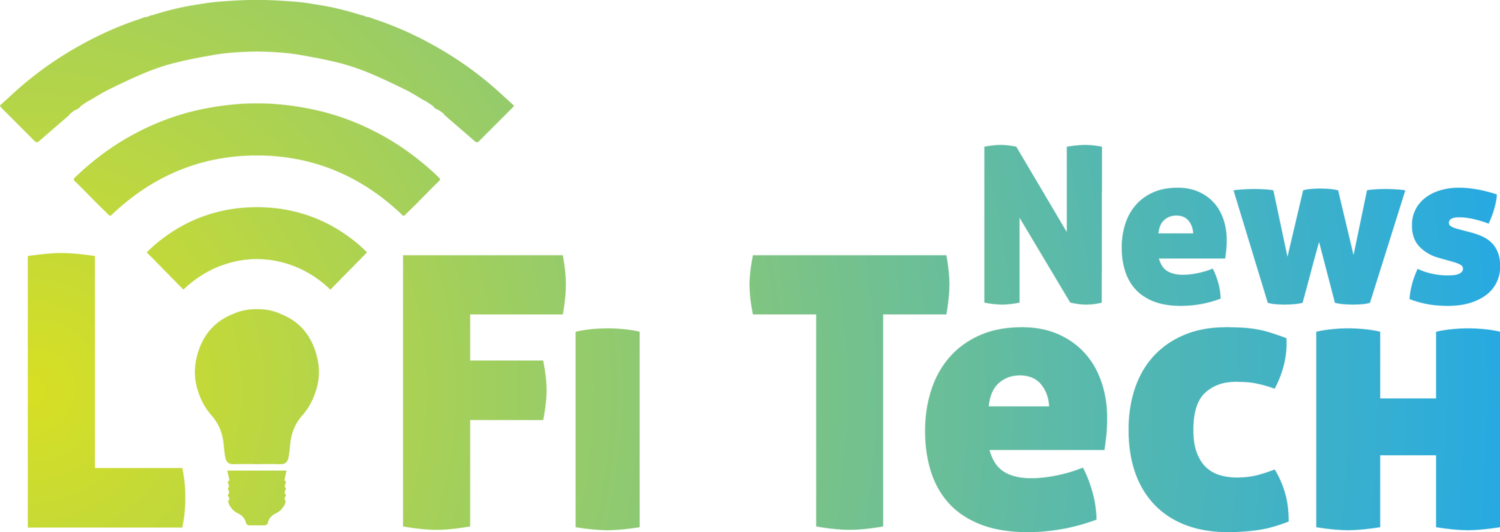Professor Harald Haas Shares His Views About LiFi and 6G On A 6GWorld Interview
Prof. Harald Haas on 6GWorld Interview
Professor Harald Haas shared his opinions on LiFi technology and 6G in a recent interview with 6GWorld at MWC23. The interview was conducted by Caio Castro.
Below are some of the conversations of the 6GWorld interview about LiFi and 6G. Some of the discussions have been edited by LiFi Tech News:
“WiFi, 5G and 4G use the radio spectrum. However, the radio is very limited, sparse and expensive, and needs to be allocated in every generation of cellular standards. The light spectrum is 3,000 times larger than the entire radio spectrum, is free and available everywhere.”
“If you look around, you’ll see lots of light sources. All of them could be a high-speed transmitter of gigabit data connectivity in homes, in streets, essentially everywhere. We are modulating high-speed data on a light carrier, which could be infrared or visible light or UV. Any light we can think of could be used for high-speed data communications.”
“The LiFi standard will allow interoperability and seamless links between different vendors. Companies will start really integrating light antenna modules being shown here today into phones of the future.”
“You can really isolate LiFi signals from one room to another, and that provides a unique feature. And that provides physical layer security.”
“When you talk about 6G, you talk about connectivity and the cyber-physical continuum. But that means a tremendous amount of data going from point A to B. And you want to do this in real-time for autonomous systems, robots, daily medicine, and others. It must offer high speed, high reliability, and low latency. And we have the light spectrum, which is 3,000 times larger than radio and is free. Why don’t we use it?”
Article source: https://www.6gworld.com/exclusives/lifi-to-help-light-6g-up-researcher-says/
Li-Fi Conference 2022
The Li-Fi Conference 2022 Edition was a great success. Li Fi Tech News will very soon write articles on the topics treated at the Conference.
What is LiFi?
LiFi, also known as "Light Fidelity" is a wireless optical networking technology, which uses light-emitting diodes (LEDs) to transmit data. In 2011, professor Harald Haas made a LiFi demonstration at the TED (Technology, Entertainment, Design) Global Talk on Visible Light Communication (VLC).
VLC uses light as a medium to deliver high-speed communication like Wi-Fi and complies with the IEEE standard IEEE 802.15.7. The IEEE 802.15.7 is a high-speed, bidirectional, and fully networked wireless communication technology-based standard similar to Wi-Fi's IEEE 802.11.
How does LiFi work?
LiFi is a high speed, bidirectional, and fully networked wireless communication of data using light. LiFi constitutes of several light bulbs that form a wireless network.
When an electrical current goes through to a LED light bulb, a stream of light (photons) emits from the lamp. LED bulbs are semiconductor devices, which means that the brightness of the light flowing through them can change at extremely high speeds. The signal is sent by modulating the light at different rates. The signal can then be received by a detector that interprets the changes in light intensity (the signal) as data. Also when the LED is ON, you transmit a digital 1, and when it is OFF, you transmit a 0.
LiFi Benefits
The primary benefits of LiFi are as follows:
• Security: Provides entirely secure access. Where there is no light there is no data.
• Safety: Does not produce electromagnetic radiation and does not interfere with existing electronic systems.
• Localisation: Allows localisation due to the small coverage area of LiFi access point - localisation can be used for very precise asset tracking.
• Data density: Provides ubiquitous high-speed wireless access that offers substantially greater data density (data rate per unit area) than RF through high bandwidth reuse.
Credit to Oledcomm
LiFi Applications
LiFi can be used for so many applications and the list is increasing every year. You can read our updated list of Li-Fi applications at the following link:
Credit to pureLiFi
LiFi Systems Reviews by LiFi Tech News
OLEDCOMM LIFIMAX KIT REVIEW - ONE YEAR IN
We reviewed the LiFiMax kit produced by the leading French LiFi company Oledcomm. We bought this LiFi kit system at the end of 2020. After over a year of use, we decided to write a review of this LiFi system. We looked briefly at the profile of Oledcomm, a brief history of the LiFiMax system, the Kit box contents, some testing and performance results of this LiFi system, the customer experience and our own verdict (the good and the bad points) of the LiFiMax kit.
You can read the review on this link:
https://www.lifitn.com/blog/lifimaxreview
SIGNIFY TRULIFI 6002.1 STARTER KIT SYSTEM REVIEW
We also reviewed the Trulifi 6002.1 starter kit produced by Signify, the world leader in lighting for professionals, consumers and lighting for the Internet of Things. We got this LiFi kit system with the help of PCDSI and Signify around August 2021. In a similar fashion done with our previous review of the LiFiMax kit a few months ago, we will look briefly at the profile of Signify, a brief history of the Trulifi 6002.1 kit, the Kit box contents, some testing and performance results of this LiFi system, the customer experience and our own verdict (the good points and the bad points) of the Trulifi 6002.1 kit.
You can read the review on this link:
https://www.lifitn.com/blog/trulifi6002review
In conclusion, if you are also interested to hear more information about the OWNII Coin or enquire about LiFi devices such as the LiFiMax and Trulifi, you can contact us through our chatbot or by sending an email through our contact us form. If you enjoyed this post and would like to hear more updates about LiFi technology, subscribe to our newsletter. Don’t forget to subscribe to our social media accounts. You can also join our Telegram group about LiFi technology on this link:
https://t.me/joinchat/FMzOmsEKyJFrU6Af







